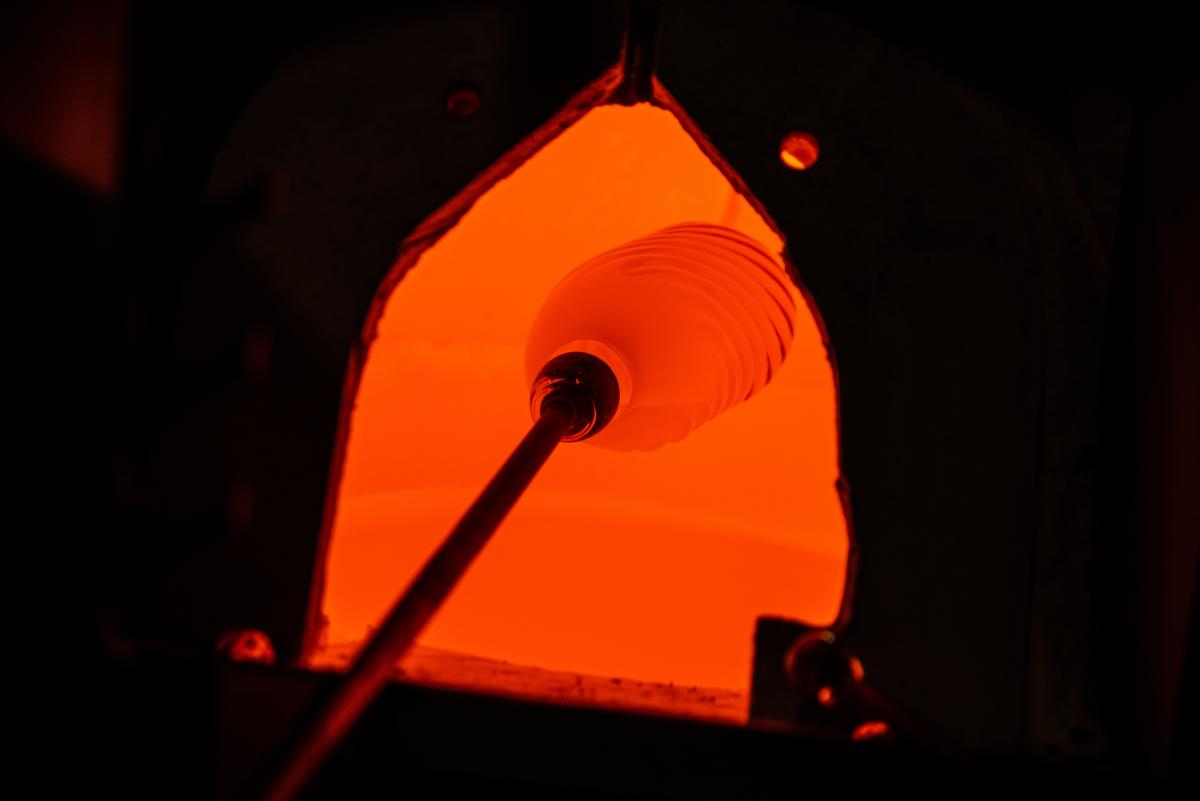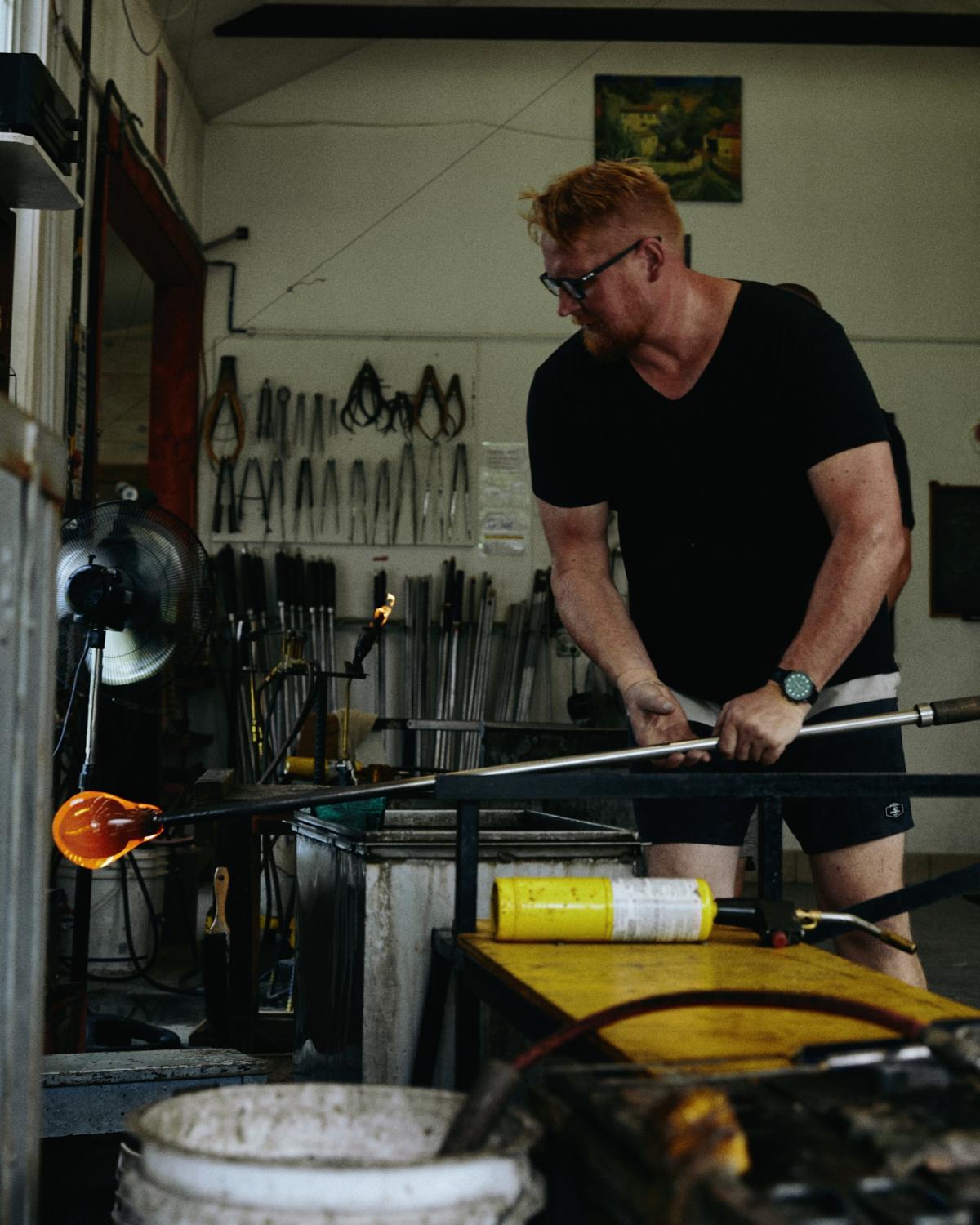Start building your dream
How It’s Made: Handmade Glass Lighting
18 May 2023
Interviews
Beautiful blown glass is one of Gabriel Scott’s signature materials used in our contemporary lighting series. We’re passionate about the material that offers endless possibilities when creating timeless lighting pieces, and we therefore take research into the material, exploration of traditional glass-blowing techniques and our production process very seriously to bring the most luxurious, well-made pieces to our collection.
In our latest interview in our How it's Made series, Nicolas Pomerleau, Head of Design, offers his insight into the use of hand-blown glass in the luxury lighting space. From the studio’s very first lighting designs to the production of hand-blown glass for our latest collections, Nicolas goes into detail about the versatility of glass and how we use this key material to develop and push the creative boundaries of our designs.
Tell us about the importance of glass in Gabriel Scott’s designs.
Besides the fact that it is almost a signature for us, I believe it’s in the purity of the material. Glass allows for great creativity. It can be shaped in almost any form, any texture and any colors. Material plays a key role in our design, and glass is most certainly crucial in our work.
Glass enables us to turn our pieces from sculpture to a functional lighting piece. We are able to borrow light and create reflections throughout the space, the glass textures distort light in a beautiful and natural way that is ever changing depending on the angles.
Is the glass blown in-house, what is the process? Does this differ from fixture to fixture?
We work really closely with a select few glass suppliers and artisans throughout the design and creation process for the glass gems. One of the most important reasons for using glass-blowing artisans is that it enables each piece to be unique, especially when looking at glass textures but also that we know each piece is created to the highest of quality. Their contribution is very important to us, we often find ourselves pushing our suppliers to the limits of the production process and this is where the truly unique pieces come out.
What was the first glass fixture produced by the studio? How has glass exploration evolved from the first piece?
The first glass fixture produced by Gabriel Scott was the Harlow series. The Harlow collection is actually a perfect example of Gabriel Scott's design roots. It's a perfect balance of glass and hardware. The inspiration for the collection came from jewelry, the delicacy of the prongs that hold the glass in place are similar to that you would find on a necklace pendant.
Over time we have got more comfortable working with glass, becoming more comfortable meant we also have become more creative and share a willingness to explore more, and push the boundaries of what is possible. The Luna collections and its beautiful pearls come from the desire to create a more colorful and and more playful product. We started to test more shapes and ways of connecting them but also around diffusion and the effect of light throughout multiple layers of glass.
What is your inspiration when it comes to designing new glass ideas for Gabriel Scott pieces?
Inspiration literally comes from anywhere, often creativity surprises us and pushes us to try new things including within the exploration of glass material, colors, shapes, textures, ways of blowing, surfaces, tools, techniques, they all inspire new designs.
Jewels are really very important in our creative process, Gabriel Scott’s founder Scott Richler’s background is in jewlery design, and I believe that our luminaries represent the jewels of the room. For example, the Luna collection is strongly influenced by necklaces, bracelets and pearls.
Tell us about the Luna Kaleido series. It’s compiled of various colors, textures and shapes, how did you start the process of figuring out what works and what doesn’t in terms of complementary finishes? Do you have a particular favorite?
I don't have a particular favorite but I really like the combination of a few pearls. While remaining moderate by not overdoing, I like to take the time and select each bead for every project. Success stands in details - every detail is important - especially in glass. Luna Kaleido’s inspiration comes from really old and traditional blowing techniques but also from a sensitivity of shapes, textures and colors. Lots of trial and error, lots of work and research to please the eye at first sight.
The process itself is all about balance. The color selection, the shapes, the position of the beads on the fixture itself, it’s really about creating a moment.
The beauty of the Luna collection is that our clients can do whatever they want! They can add more shapes and colors to their room as they want it. The beauty of our Welles Textured Glass also offers an opportunity to mix and match colors and textures, or a client can work with us on another one of our fixtures to create something bespoke.
The studio introduced Welles Textured Glass in 2021, why did you add this feature to the existing Welles series? What makes it special?
When approaching the textured glass we knew we wanted to revive ancient techniques and explore traditional and natural colors and textures. The process was so interesting that we almost wanted to revisit all our glass products with different colors, shapes and textures. Glass has so much to offer, why limit ourselves and our creativity? By offering more, we also offer our fellow architects and designers more freedom to be creative for their bespoke projects.
What is the importance of using hand blown glass over mass production?
Hand-blown glass has become part of Gabriel Scott’s DNA. Working with artisan glass blowers across the world is the best way we can ensure the quality of our pieces, we believe in the values and input from those artisans that we work with. From a designer’s perspective, it’s exciting to see visions come to light, and working with highly skilled tradespersons enables me to understand more about how we can push the designs. If we simply mass produced our pieces, we wouldn’t be able to adapt our products to the projects and interior challenges that our clients face.
What is the most popular glass finish?
It’s always white, it’s a classic. Although we are seeing an increased number of requests for textured glass and interesting bead configurations for Luna Kaleido. There is always a bit of time between launching a new design and integrating it into projects, we released an exciting collection of new products (Welles Reimagined) in the fall of 2022 that features a variety of glass finishes, so we are beginning to see these implemented in upcoming projects. It’s important for us to offer as many different textures and color options as we do as it helps us to ensure the visions of our clients are met, this is why all of our pieces are customisable.
Where do you go from here in terms of glass or other material exploration?
Recently we are working more in collaboration with different artists and designers around the world and this brings another kind of creativity. Passionate conversation and sharing ideas with other creative people is an inexhaustible source of creativity.
Additionally, books, exploring blogs, but also from nature, old artifacts, discussions with suppliers and craftsmen are also always essential for research. Living in Canada I get to spend a lot of time amongst nature which enables me to take inspiration for future projects and inspires future glass colours and textures. I am always researching and discussing with the team how we can develop all aspects of Gabriel Scott pieces for our clients.
I think what’s next is exploring materials that enable us to offer even more in terms of customization. We continue to work with the likes of Guan Lee, who Scott went to university with, and Grymsdyke Farm who created the Welles Reimagined Sculpture using POLiROCK.
View the lighting:



















